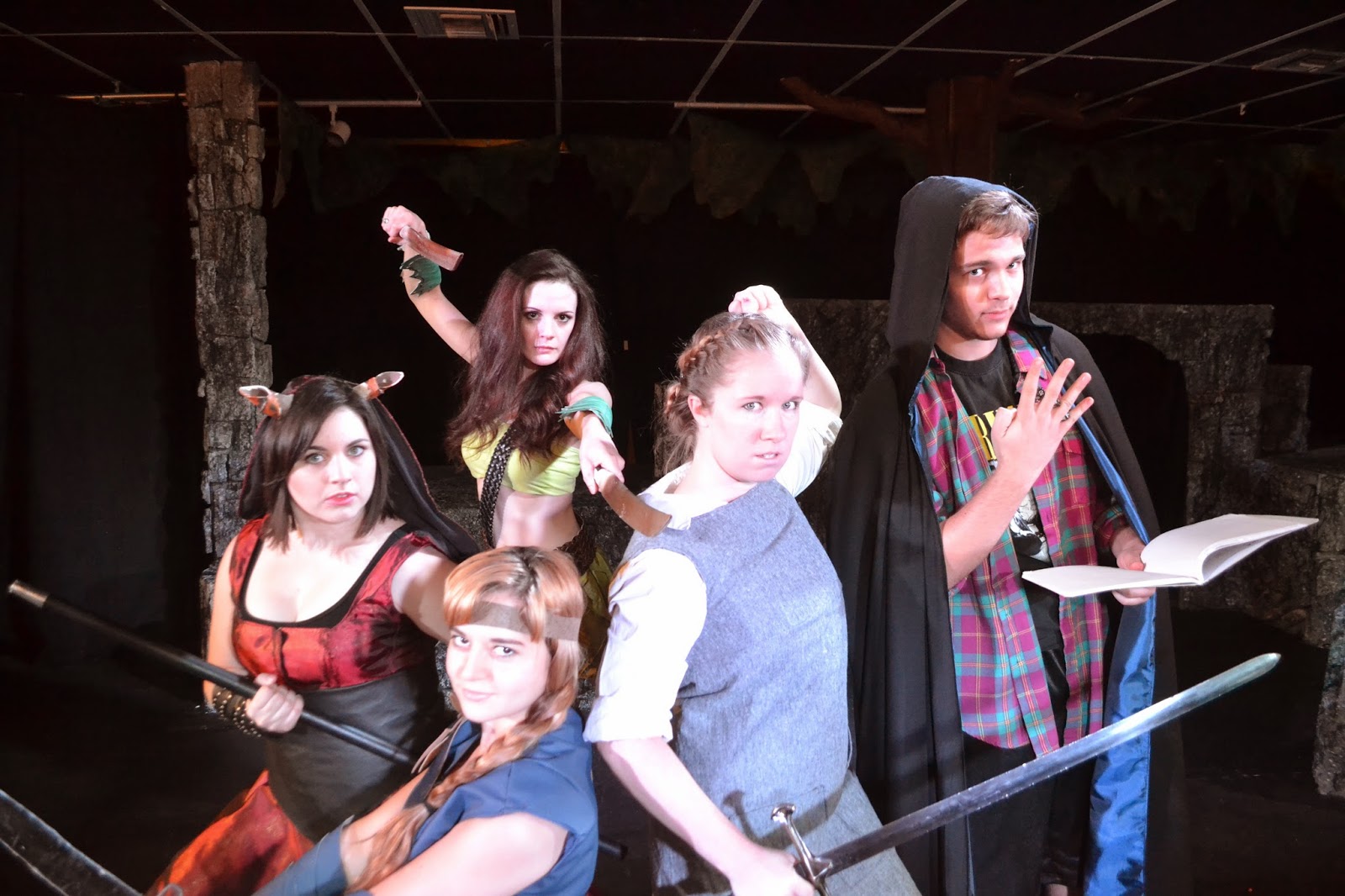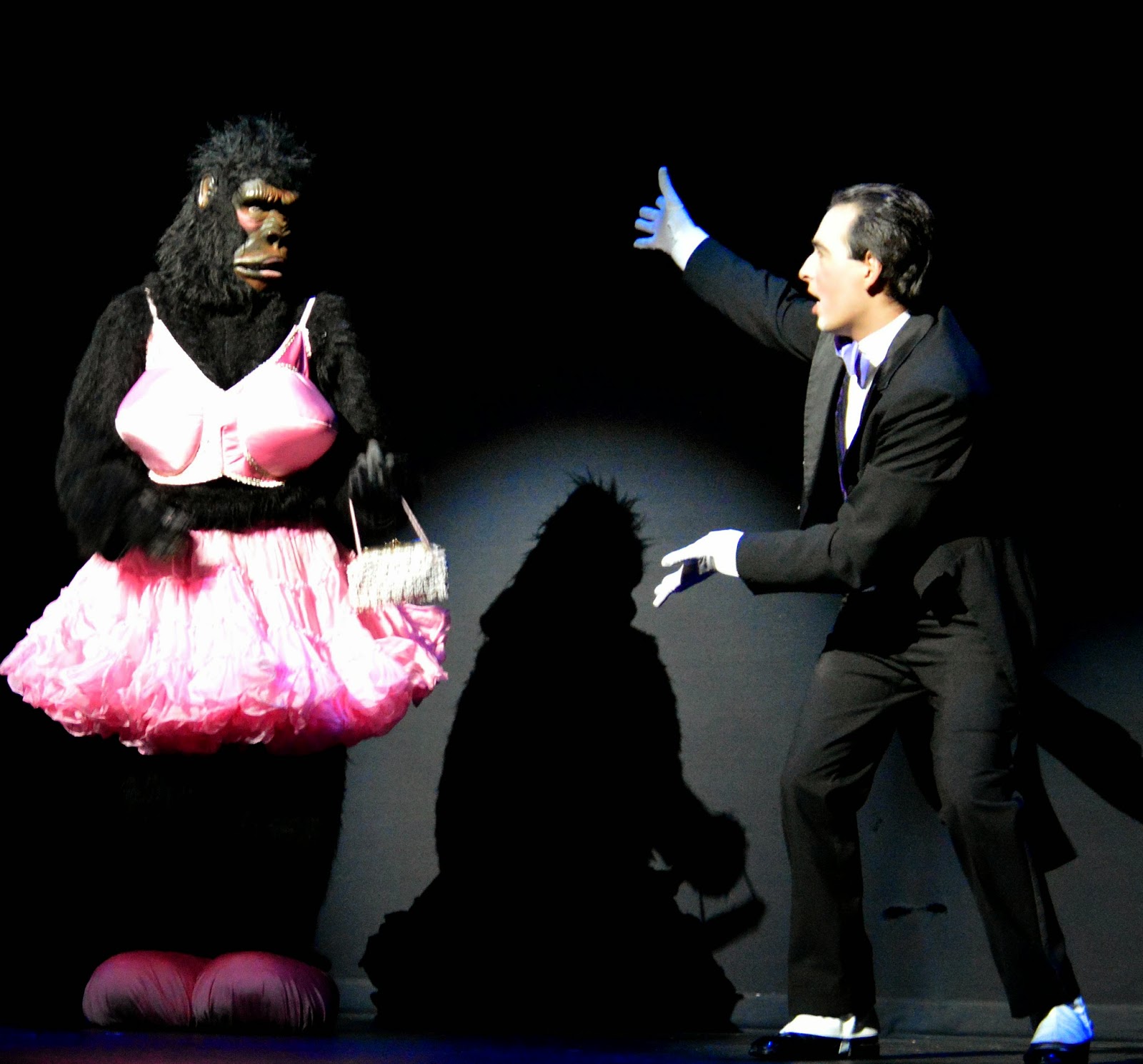Click here to read my review of the national tour of Jersey Boys at TalkinBroadway.com.
 |
| Adam Zelasko, Hayden Milanes, Quinn VanAntwerp and Nicolas Dromard |
Part docudrama, part rock concert, Jersey Boystells the behind-the scenes story of the pop group the Four Seasons—how they became one of the most successful bands of the 1960s and what ultimately broke them apart. Featuring dozens of songs, including the group's five chart-topping hits "Sherry," "Big Girls Don't Cry," "Walk Like a Man," "Rag Doll" and "December, 1963 (Oh, What a Night)," this is a rich, entertaining look into the lives of these young men and the music that resonated with the entire country. The musical won the Tony Award for Best Musical and London's Olivier Award for Best New Musical; those productions are still running, and there have been numerous tours and appearances in cities all over the world (a film version was just released this summer as well). The national tour, which has an excellent cast, is at the ASU/Gammage in Tempe for a two-week run through August 3rd, after playing the venue once before in 2006.
With many dramatic and comedic moments, Jersey Boys follows four guys from blue collar families in New Jersey: Frankie Valli, Tommy DeVito, Bob Gaudio and Nick Massi. With a combination of prison records, mob ties, gambling debts, family struggles, and a huge amount of Italian machismo, you'd think they had too much baggage to be successful in the world of pop music. But they also had a deep connection and trust in each other and found a unique sound, with the combination of the falsetto/tenor voice of Valli and the songwriting prowess of Gaudio, which made them one of the most successful pop acts of the 20th century, selling 175 million records worldwide when they were all still in their twenties.
Book writers Marshall Brickman and Rick Elice found an interesting way to portray the drama and success of the group by having each of the four group members take turns narrating the story of their rise to fame. Having each member's section set against a video projection announcing one of the four seasons—Fall, Winter, Spring and Summer—ties nicely into the name of the band and how seasonal changes mirror the changes the group went through. It is also a perfect way to change the "voice" the audience hears narrating the story, gives each member of the quartet an equal amount of time to tell his story, and shows that each of the guys has a slightly different memory of what happened and who was exactly responsible for the success of the group.
One big reason for the show's success is the sheer joy and excitement of seeing four virtually unknown actor/singers "become" the Four Seasons in front of our eyes. Sure, the vocal styles and in sync dance moves are modeled directly on the pop group, but the four talented actors do more than just mimic the quartet; they embody them, honor them and become a well-honed foursome themselves. While the recent film version was successful in showing the drama behind the group's success, it wasn't able to achieve the same "live" experience of seeing these men become the Four Seasons.
The touring cast features four actors who are more than capable of bringing the men to life on stage. Hayden Milanes does an excellent job of showing how Frankie changes and grows over the years that the show covers. At first, Milanes easily embodies the frantic teenager and young man who is nervous and not quite sure about how to approach a girl, or afraid when, on the way to a jewelry store robbery, he witnesses a murder. Then, he grows into a self-assured man by the middle of the second act when he has to stand up to one of his band mates. Vocally, Milanes fully displays the high notes and rich depth of Valli's voice. Nicolas Dromard has the right swagger and cocky ego to make Tommy De Vito the villain of the piece, but he also has a grounded delivery of the material to show us that De Vito was just doing what he thought was best to move the band along on the road to success.
Quinn VanAntwerp has a rich, pure voice that brings Bob Gaudio's vocals to life. He is appropriately gawky and charming as the teenager who had a hit with "(Who Wears) Short Shorts" before joining the group, but also naturally shows the intelligence of the young man who has enough business savvy to know what needs to be done to protect his and Frankie's best interests. Adam Zelasko comfortably depicts Nick Massi as the quiet member of the group. Though he doesn't say much, when he does speak he has some of the best comic lines in the show, and he knows how to deliver them with ease. His deep bass voice also adds nice shadows to the group's songs; with Milanes, Dromard and VanAntwerp, the harmonies created are thrilling.
In the hard working ensemble, many of whom play dozens of parts, Marlana Dunn is quite moving as Frankie's wise cracking, rough wife Mary and Barry Anderson scores as the group's manager, Bob Crewe.
Des McAnuff is impeccable in the way he stages the show. He uses swiftly moving set pieces and a large video screen, as well as the entire stage, to create imaginative scene transitions. He knows how to get his actors to successfully portray their characters' growth, with each appearing to age right in front of us over the course of the musical. While Jersey Boys is a swift moving show that covers many years, settings and characters, McAnuff has also wisely directed the cast to not rush the comedic moments, to ensure that the jokes land and to achieve a balance with the dramatic and emotional moments.
Choreography by Sergio Trujillo brings to life the skilled and synchronous movements representative of the Four Seasons as well as just about every other trio and quartet of the 1950s and '60s, yet manages to make them seem organic to each song. The fact that the movements are ever changing also shows the evolution of the group's choreography over the years.
Like the direction and choreography, the creative elements are modeled directly on the Broadway production. While Klara Zieglerova's set design lacks any large and elaborate moving set pieces, it works beautifully, with a permanent second story walkway and spiral staircase, moving video screens and fencing, various chairs, desks and tables that quickly transport us from scene to scene and help frame the various locations of the show. The only change I noticed from the Broadway production is the lack of a stage lift that is used to bring the four band members up from beneath the stage at one point in the show. It's understandable how that wouldn't be achievable in a touring production, but Zieglerova has designed a nice alternative for a similar effect. A never ending parade of period perfect costumes designed by Jess Goldstein include some ornately tailored suits for the men; and the Tony winning, multi-colored, and richly elaborate lighting design by Howell Binkley paints the stage in a rainbow of changing colors. Steve Canyon Kennedy's sound design is crystal clear, allowing the audience to catch every lyric and line of dialogue with ease. Ben Hartman conducts the powerful ten-piece orchestra that is impeccable in achieving the various sounds required for the numerous styles of music in the show.
Jersey Boys is an entertaining telling of the journey of the Four Seasons, and the current national tour has an extremely talented cast and direction, choreography and creative elements that are on par with the Broadway production. With a steady stream of over thirty songs, the show is full of the music that these four guys created, which is still memorable fifty years later. However, it is the story of the struggles they went through that resonates and makes the group's success even more sensational and the show more entertaining.
Jersey Boys runs through August 3rd, 2014, at ASU Gammage located at 1200 S. Forest Avenue in Tempe. Tickets can be purchased at www.asugammage.com or by calling 480 965-3434. For more information on the tour, visit http://www.jerseyboysinfo.com/tour/.


.jpg)
.jpg)
.jpg)

.jpg)


